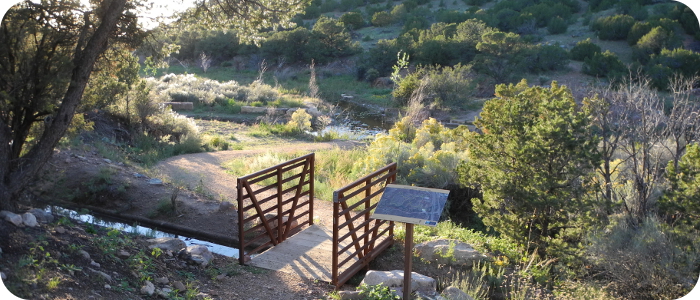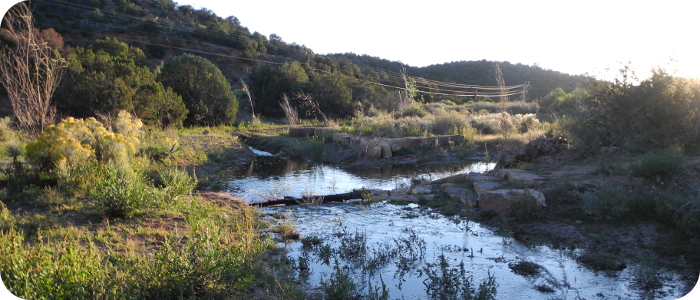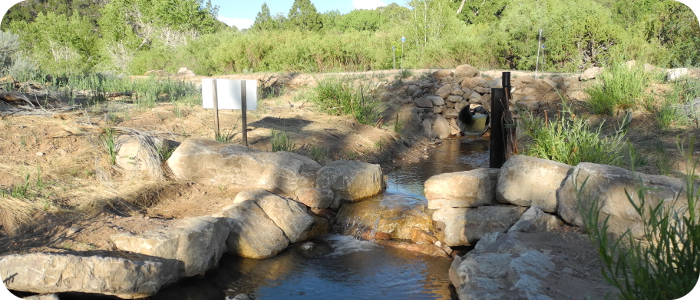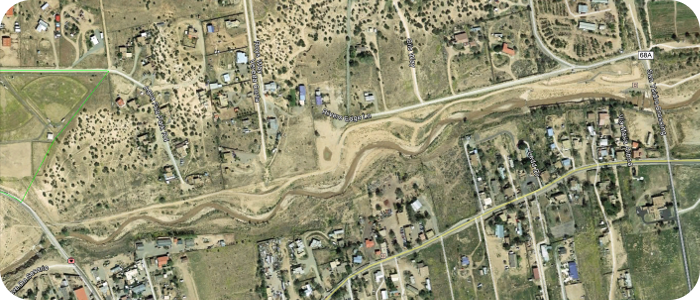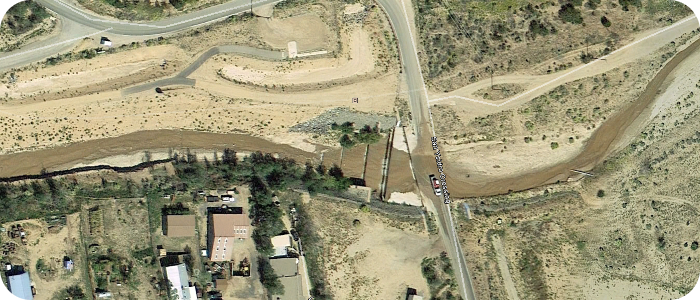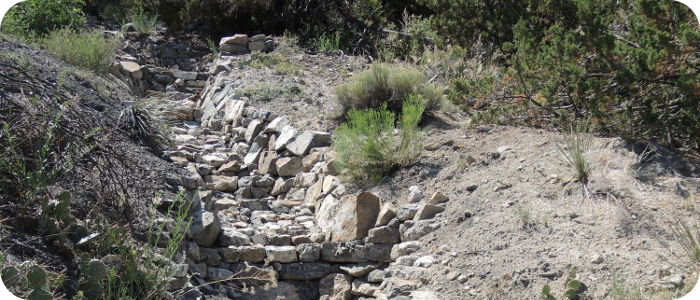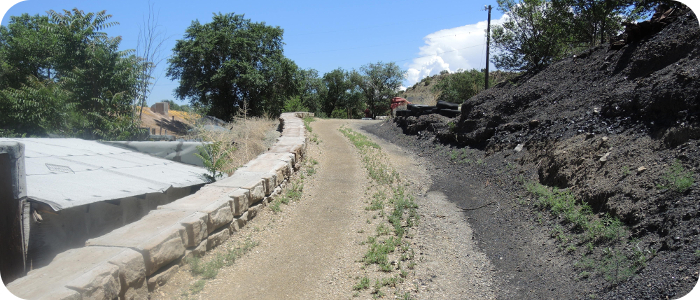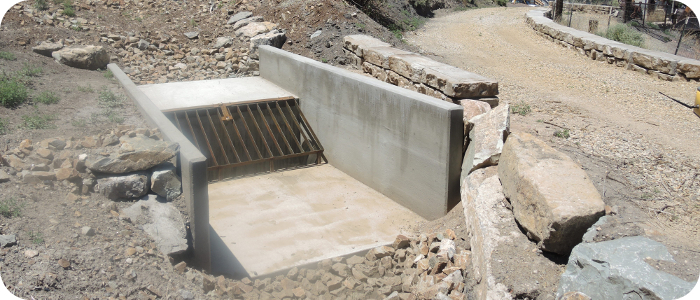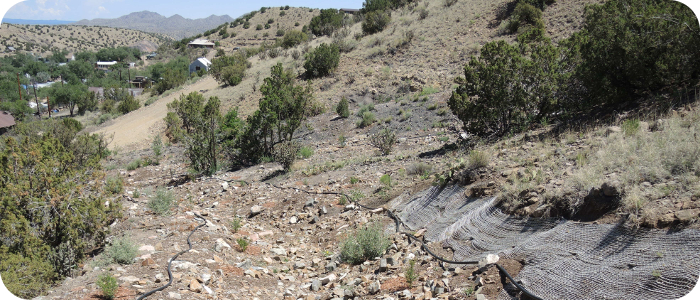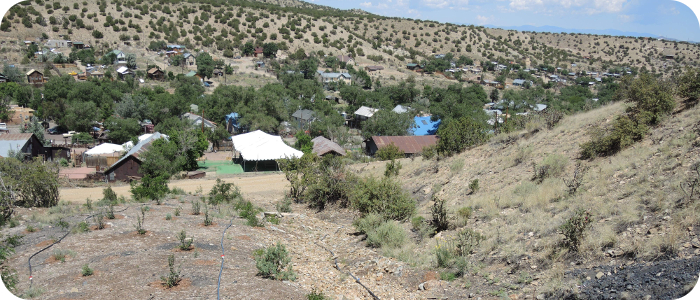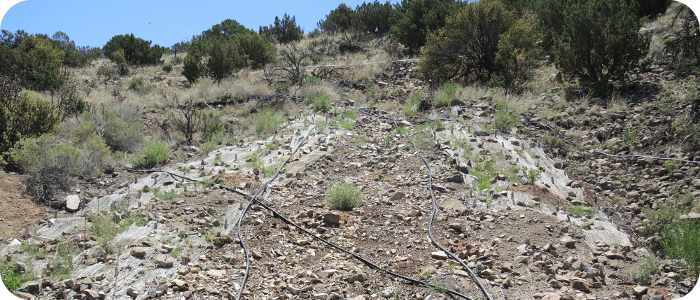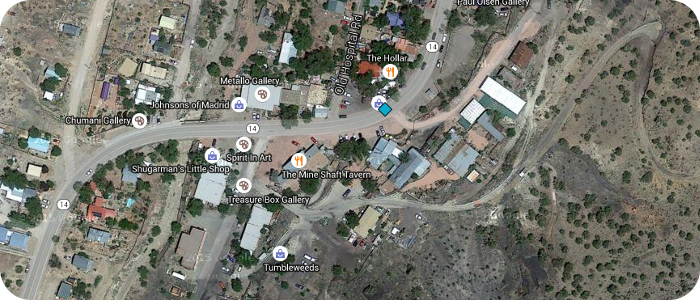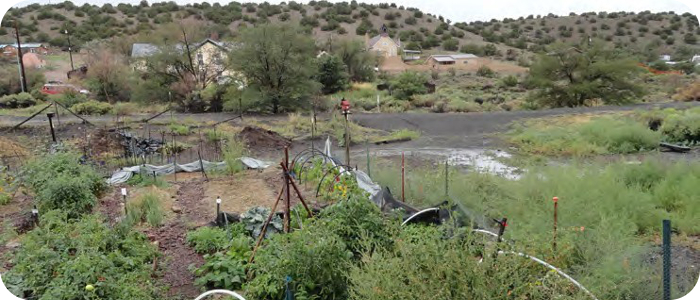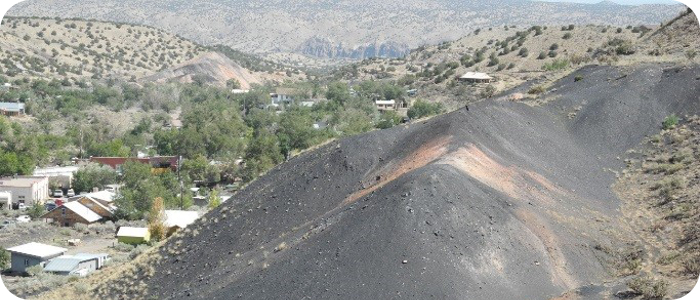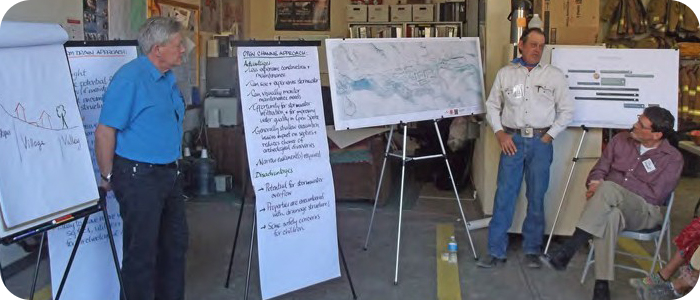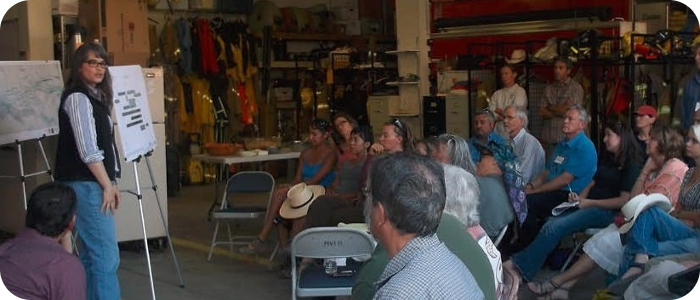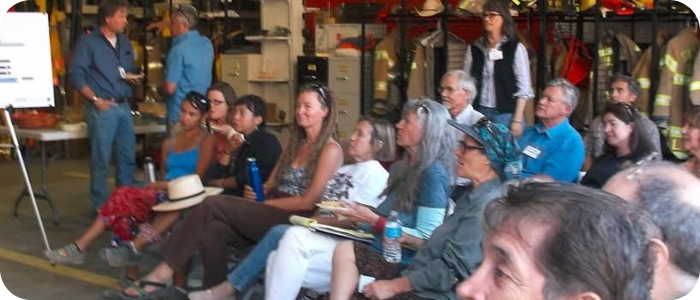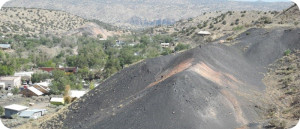 Traditional stormwater management practices focus on moving stormwater away from development and into large flood control basins and conveyances that discharge into local waterways, often with great volume and duration. These concentrated discharges exacerbate stream bank erosion and contribute to aquatic habitat loss, contributing to localized stream damage. Riverbend utilizes Low Impact Development (LID) techniques for stormwater management wherever possible. The watershed and the receiving watercourse will both benefit when the majority of rainfall is infiltrated as close to where it hit the ground as possible. LID techniques, or “green infrastructure” practices mimic the natural response of a watershed by retaining and filtering runoff, encouraging evapotranspiration, and maintaining plant communities. LID practices include rain gardens, bio swales, media lunas, zuni bowls, and other best management practices. Scroll below or use the menu to the right to read more about our low impact development and green infrastructure projects.
Traditional stormwater management practices focus on moving stormwater away from development and into large flood control basins and conveyances that discharge into local waterways, often with great volume and duration. These concentrated discharges exacerbate stream bank erosion and contribute to aquatic habitat loss, contributing to localized stream damage. Riverbend utilizes Low Impact Development (LID) techniques for stormwater management wherever possible. The watershed and the receiving watercourse will both benefit when the majority of rainfall is infiltrated as close to where it hit the ground as possible. LID techniques, or “green infrastructure” practices mimic the natural response of a watershed by retaining and filtering runoff, encouraging evapotranspiration, and maintaining plant communities. LID practices include rain gardens, bio swales, media lunas, zuni bowls, and other best management practices. Scroll below or use the menu to the right to read more about our low impact development and green infrastructure projects.
Santa Fe River in Santa Fe, NM -- City of Santa Fe
Cross Vane Repair
Riverbend Engineering teamed with another consulting firm on the design and construction oversight of this project for the City of Santa Fe. Recent flood events had torn apart a cross vane structure at a sharp bend in the river, and lateral riverbank erosion had begun. Riverbend’s design solution included armoring the outside bank of the river at the bend, widening the active channel to match the river upstream and downstream, and constructing several grade control structures to limit further channel bed erosion. Riverbend’s design sought to fix the erosion and grade control problems with a natural looking approach, and limited the hardscape to only those areas where it was necessary. The design palette utilized large boulders where needed, concrete grout for the largest grade control, willow and cottonwood transplants, and selected grading to shape the channel’s width and profile. The photo below shows the largest of the grade control structures during the construction process. As the vegetation matures, a mix of rocks and willows along the river bank looks much more natural than a continuous lining of concrete or riprap rock.
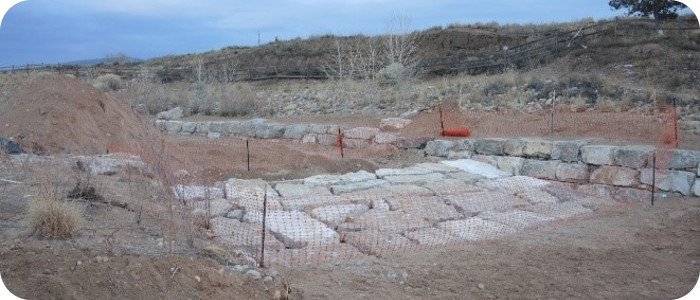
Santa Fe River near Santa Fe, NM--Santa Fe County

Riverbend has worked with Santa Fe County since 2011. Our first project with the County included design, permitting and construction management of wetland improvements, trail and parking access improvements at Arroyo Hondo Open Space. Between 2012 and 2014 Riverbend worked on the design and construction oversight of three separate river restoration projects in the Santa Fe River. On several of these projects Riverbend was a design sub-consultant to a larger firm, but on the most recent flood damage repair project Riverbend was the prime contractor with the County. Through these multiple projects Riverbend has established a strong working relationship with County staff, even as other involved consultants have come and gone. This relationship and confidence in Riverbend’s technical abilities has led to Riverbend being selected for on-call services with the County, and the subsequent solicitation of cost proposals for engineering services at other locations within the County, see below.
Santa Fe River Trail and Channel Improvements, Phase 4
Riverbend developed revised grade control structure concepts due to difficulties experienced during Phase 3 construction in obtaining adequate quantities of large boulders. Soil cement was ultimately decided upon.
Santa Fe River Restoration at San Ysidro River Park in Agua Fria, NM
Riverbend Engineering was hired as a river expert for this river restoration and stormwater management project. Approximately two years after the initial prototype restoration work was completed along the Santa Fe River between the San Ysidro crossing and Caja del Oro Grant Road, an estimated 100-year storm caused damage to several sections of the newly reconstructed riverbed. To address those areas, Riverbend designed repairs and/or modifications to some of the previous work, plus new improvements including additional grade control structures, bank erosion protection structures, riparian plantings, and additional stormwater rundowns at the river. Following completion of the design, Santa Fe County hired Riverbend directly to oversee construction of the repair work in this section of the river. Due to their river expertise and success on this and other similar projects, Riverbend is now included on the County’s list of pre-qualified consultants.
Santa Fe River at the Randall Davey Audubon Center
Riverbend Engineering provided technical expertise for river restoration design in the upper reaches of the Santa Fe River adjacent to the Audubon Center. The riparian vegetation enhancement project extended from the old Two-Mile Dam site to the Acequia Madre headgate, and included mapping, inventory and designation of surviving riparian habitat, as well as restoration of degraded areas. Riverbend developed the primary designs for both the river restoration work and a flow diversion structure that was included in the final plan set. Riverbend also provided construction phase support.
Arroyo Hondo Open Space
Our first project with the County included design, permitting and construction management of wetland improvements, trail and parking access improvements at Arroyo Hondo Open Space.
Frenchies Field & Siler Road
Madrid Arroyo in Madrid, NM
 Riverbend Engineering worked on a large stormwater management erosion control project in Madrid NM from 2012 to 2015. This project was led by the AML team at ENMRD, and Riverbend was an engineering subcontractor to the prime design/build contractor for this project. Riverbend’s assessment, analysis and design work included watershed level hydrologic modeling, arroyo level hydraulic modeling, gully size erosion control measures and grade control structures, and surface treatments to reduce soil erosion. Solutions to debris flow problems that were occurring during flash flood events required an integrated approach: small scale features higher up in the watershed, and larger structure/conveyance elements down below. The design part of the contract included development of preliminary plans, Agency reviews and comments, public information meetings and solicitation of public comments, negotiations with private landowners to allow construction of new stormwater infrastructure and for temporary construction access, and finished with a detailed plan for construction that was limited to locations where permission to construct could be obtained,. Project planning addressed the timing of construction so as to minimize disruption to commercial activities, and addressed the location of new infrastructure and construction activities to avoid significant archaeological sites. This level of project review went all the way to State Historic Preservation Division understanding the visual impacts of the project.
Riverbend Engineering worked on a large stormwater management erosion control project in Madrid NM from 2012 to 2015. This project was led by the AML team at ENMRD, and Riverbend was an engineering subcontractor to the prime design/build contractor for this project. Riverbend’s assessment, analysis and design work included watershed level hydrologic modeling, arroyo level hydraulic modeling, gully size erosion control measures and grade control structures, and surface treatments to reduce soil erosion. Solutions to debris flow problems that were occurring during flash flood events required an integrated approach: small scale features higher up in the watershed, and larger structure/conveyance elements down below. The design part of the contract included development of preliminary plans, Agency reviews and comments, public information meetings and solicitation of public comments, negotiations with private landowners to allow construction of new stormwater infrastructure and for temporary construction access, and finished with a detailed plan for construction that was limited to locations where permission to construct could be obtained,. Project planning addressed the timing of construction so as to minimize disruption to commercial activities, and addressed the location of new infrastructure and construction activities to avoid significant archaeological sites. This level of project review went all the way to State Historic Preservation Division understanding the visual impacts of the project.

